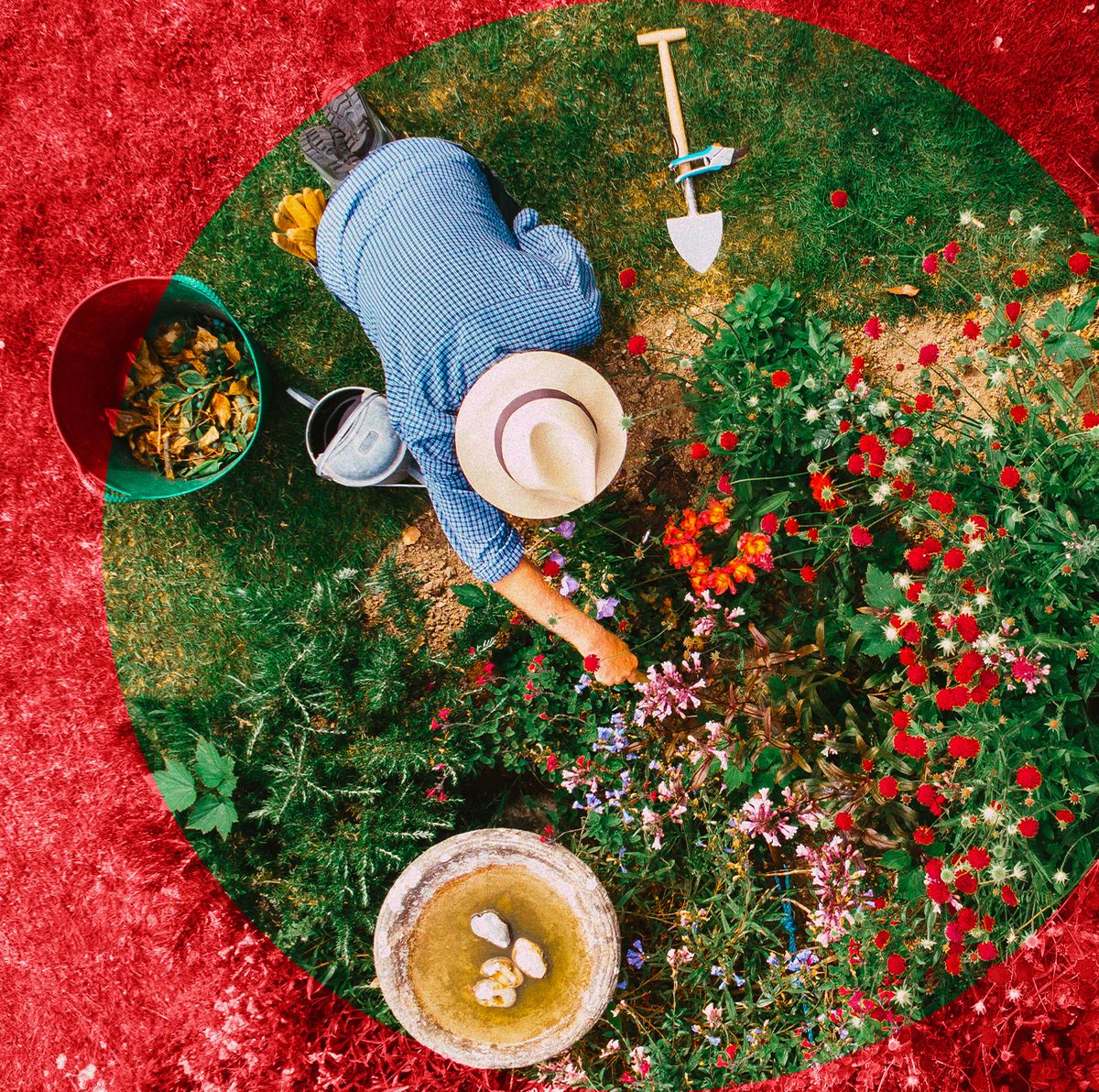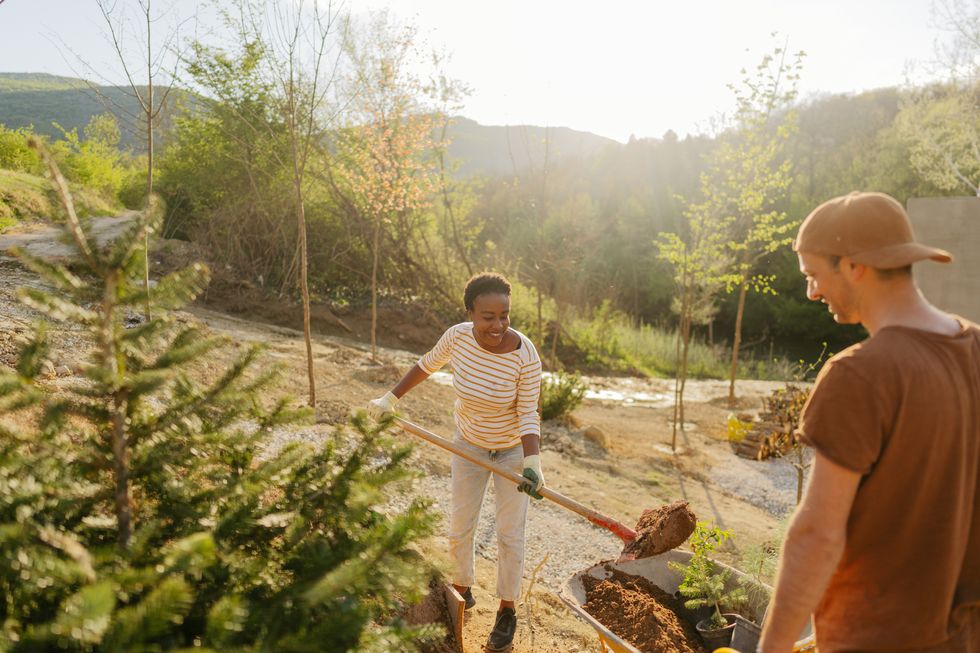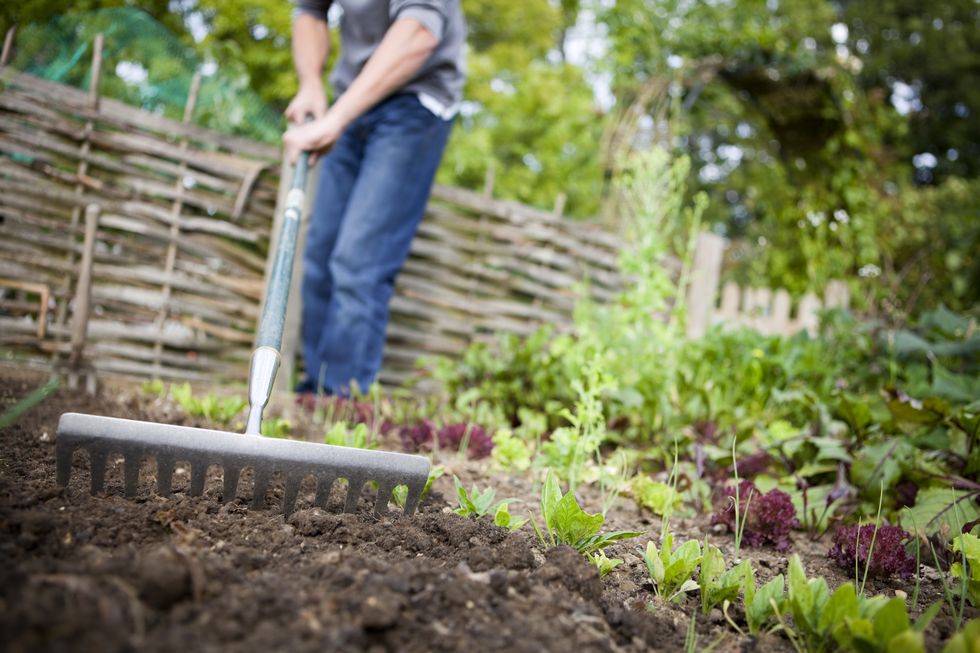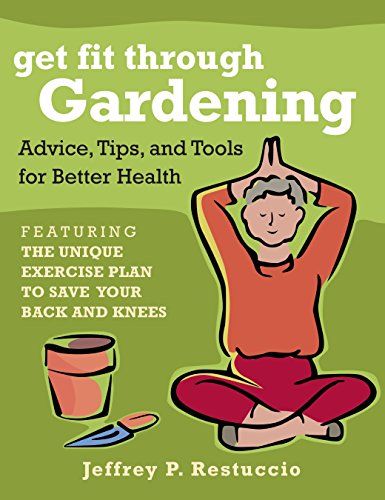New Year’s resolutions to get in shape may be long gone, but spring is a great time to renew your commitment to a healthy body. Instead of a gym membership with a hard-to-cancel contract, hidden fees, and commute time, you might have a nearly free alternative right outside your kitchen window: your backyard. It could be a great place to get in shape, especially if it’s a complete mess.
Studies show that gardening may be just as effective at getting stronger and losing weight as regular visits to the gym. The activity increases muscle strength, reduces body mass index (BMI), enhances flexibility, and raises vitamin D levels. Gardening is basically a superfood for fitness, combining the healthiest activities your body needs.
Case in point: Years ago, when I was considerably heavier and suffering from an aching back, I started cleaning our tiny backyard on weekends. It was an overgrown, neglected wreck of a space. After months of digging, hauling, clearing, planting, and all else, I became a stronger, slimmer person. And my back pain disappeared.
It was a gradual process that cost a modest amount of money and inspired no stress or worry. I didn’t diet or monitor any stats, buy special clothes, or beat myself up for missing a day. Losing 25 pounds just kind of happened. Plus, my sad, scary yard transformed into a lush, pretty space. Since then, I’ve learned these gardening activities are the most effective for staying fit.
Walking
Walking is the foundation of gardening. It seems like a trivial activity, but research shows it’s highly effective in strengthening muscles, maintaining weight, lowering blood pressure, and curbing cravings for sweets. A University of Cambridge study found that just 11 minutes of it daily lowered risks for cancer, stroke, and heart disease.
In the garden, you might walk from your perennial border to the garage, drag the hose, fetch fertilizer from the porch, and so on. Oh, misplaced your shovel? Maybe it’s beneficial to your well-being to roam around for 10 minutes trying to find it. Those zigzagging steps add up to big results with small effort.
Digging
Recently, a friend bemoaned “all the digging involved with yard work.” Yes, gardening requires digging, but that’s a blessing in disguise. Digging and shoveling have the highest metabolic equivalent (or MET) rating. METs are a way of categorizing activity according to intensity.
Digging can burn up to 450 calories an hour, depending on your height, weight, and how vigorously you do it. Plus, your core muscles (lower back, hips, butt, pelvis) feel the burn. If you want to lower your BMI, dig a big hole, plant a tree, load some bark into a wheelbarrow, and fill a raised bed with soil.
Weeding and Raking
If you’ve been to yoga class, you know how great you feel afterward. Stretching your body leads to increased flexibility and toned muscles. Gardening requires a lot of stretching. When you reach for that weed under a bush, you’re practically doing a child’s pose. This extends your spine and keeps muscles flexible.
Raking is similar. You stretch to bring the tool toward you. Though raking doesn’t relax you like yoga and should be monitored to avoid repetitive motion injury or a pulled muscle, it can give your arms, stomach, and shoulders a healthy workout. For a 150-pound woman, for instance, raking can burn about 288 calories an hour.
Mowing
Mowing the lawn can be tedious if you do it dozens of times a year, but psychologists say it acts as a nice, meditative way to calm the mind. What’s more, a 150-pound woman can burn more than 300 calories pushing a powered mower for an hour. A 180-pound man can burn almost 400.
Not into carbon dioxide-emitting gas mowers? Try shoving an old-school push mower around for an extra 70 or so calories. Overall, non-exercise physical activities like mowing serve as a solid low-impact exercise that can increase cardiovascular health and longevity in those of a certain age.
Squatting and Lifting
On an average day in the garden, you’re likely to carry at least one heavy pot, large plant, or bag of soil. Lifting these objects from the ground (while using your knees and keeping your back straight) strengthens your core muscles. It’s akin to a deadlift or bear hug squat, where a person squats to lift a weighted bag at the gym.
Fitness trainers love squats for good reasons. Not only do they strengthen your core, but if executed properly and repeated every day, they can also alleviate back pain. In the garden, if you regularly make a point to squat and then stand up from a kneeling position, your body will be able to spring out of a chair more easily in the future.
Keep in mind that not all gardening activities are equal. Researchers found watering, preparing, growing, and transplanting medium and small plants had lower MET ratings and hence, didn’t have as much effect on the body. A moderate to intense suite of activities is more effective. Despite that, gardeners do need to honestly consider the state of their physical health before engaging in vigorous tasks. The last thing you want from exercising in the garden is an injury that dogs you for years.
It’s important to stretch before engaging in physical activities. Jeffrey Restuccio, author of Get Fit Through Gardening, also recommends changing things up every so often to avoid injury. “If you don’t change what you’re doing,” he says, “you’re going to be sore.”
As you work in your yard, it may pay to give in to distraction and take on different tasks. Lightly weed. Shovel gravel. Water your tomatoes. Haul compost bags from the car. Whatever you do and whatever order you do it in, remember to take a break and enjoy the healthy process of making your outdoor space beautiful.
Karen Hugg is the author of Leaf Your Troubles Behind: How to Destress and Grow Happiness Through Plants and has contributed to The Washington Post, Wired, and Thrive Global.
Get Shondaland directly in your inbox: SUBSCRIBE TODAY



















